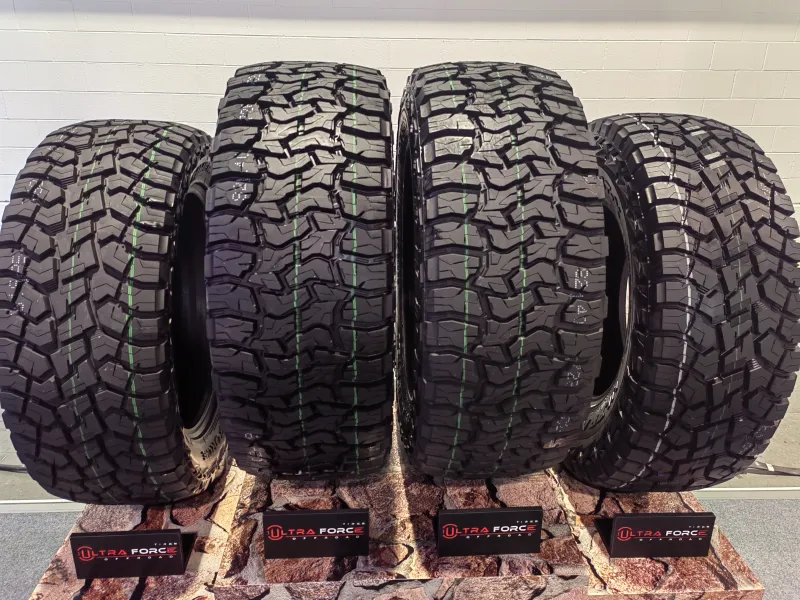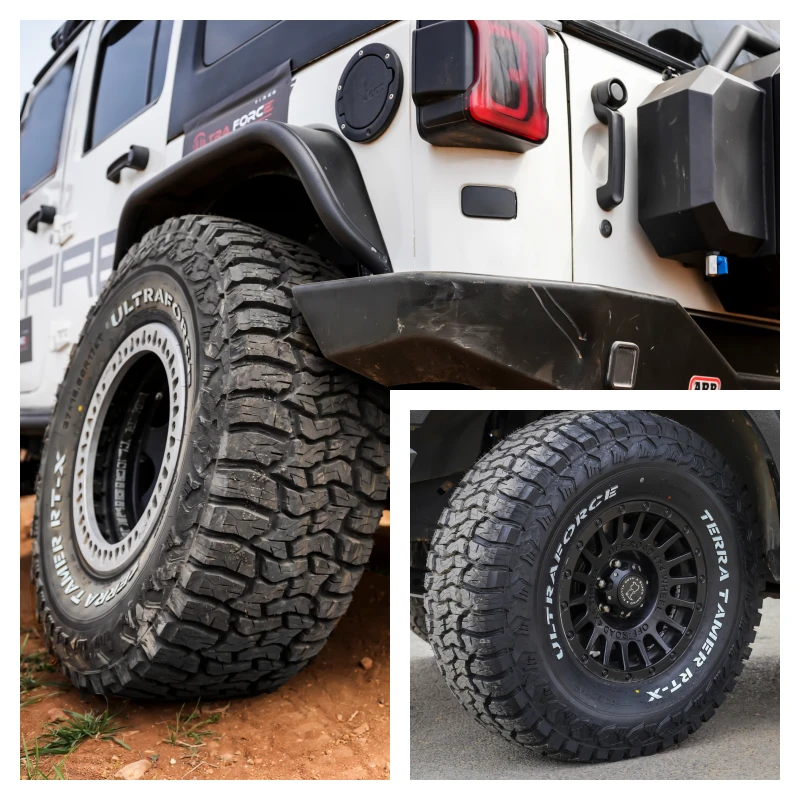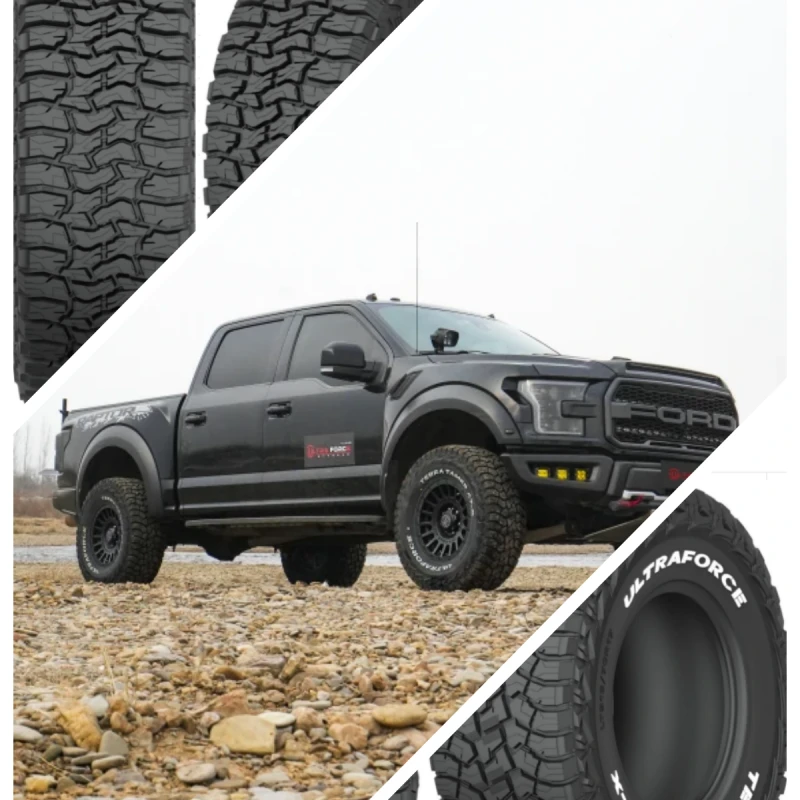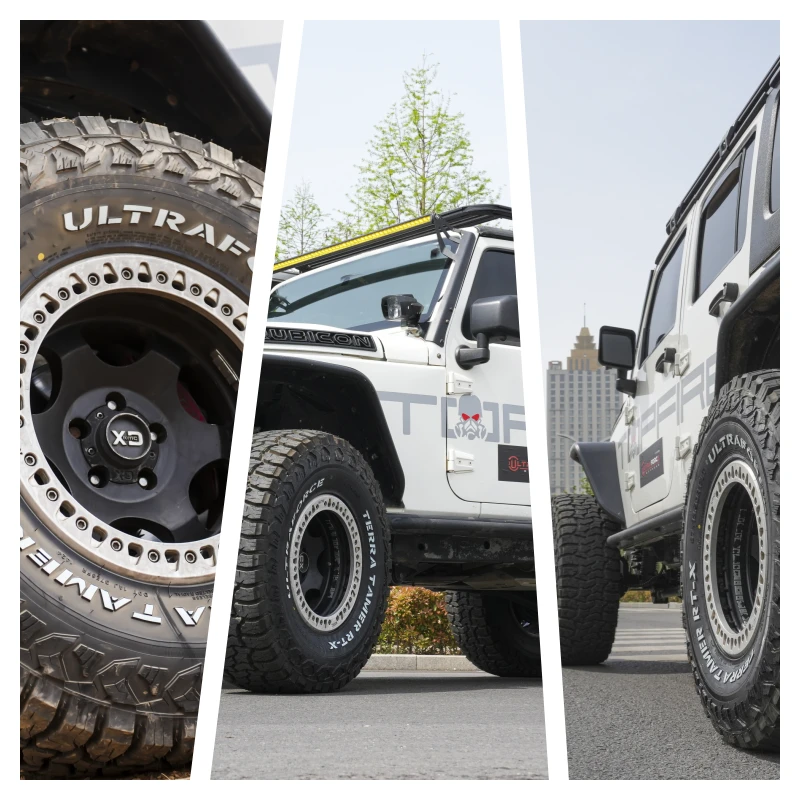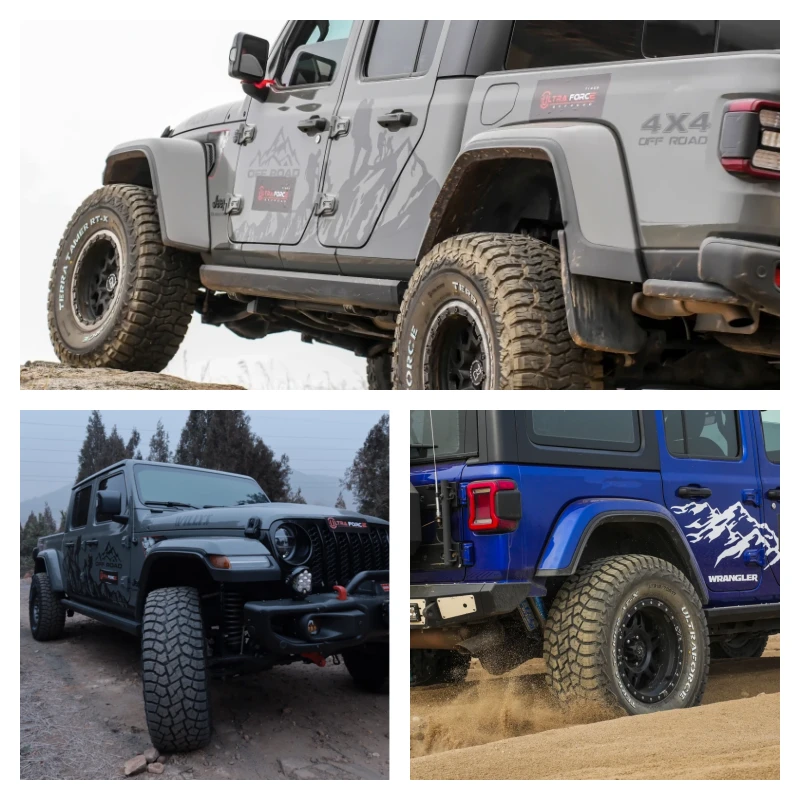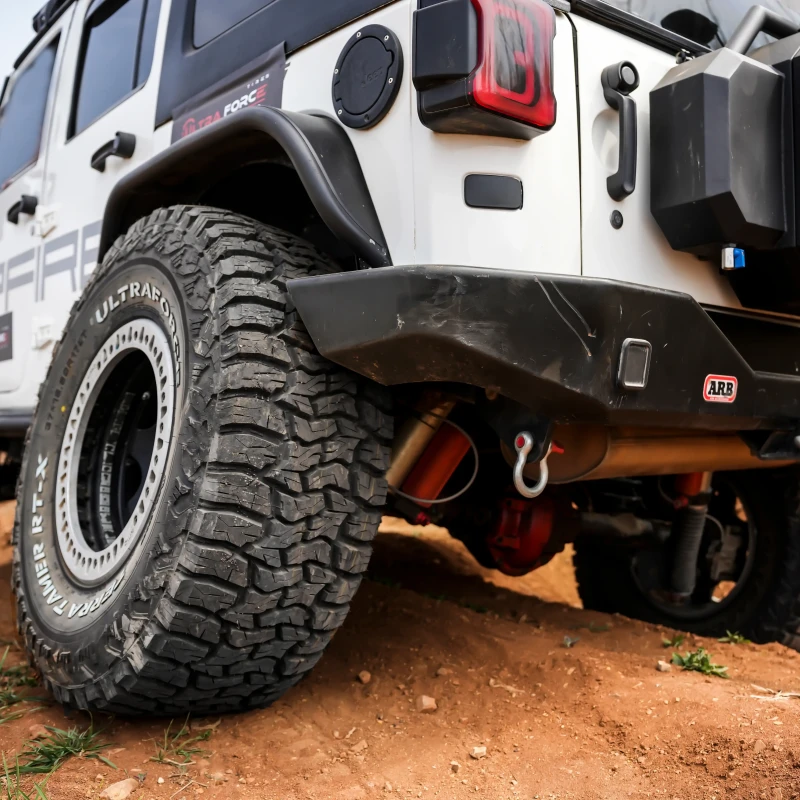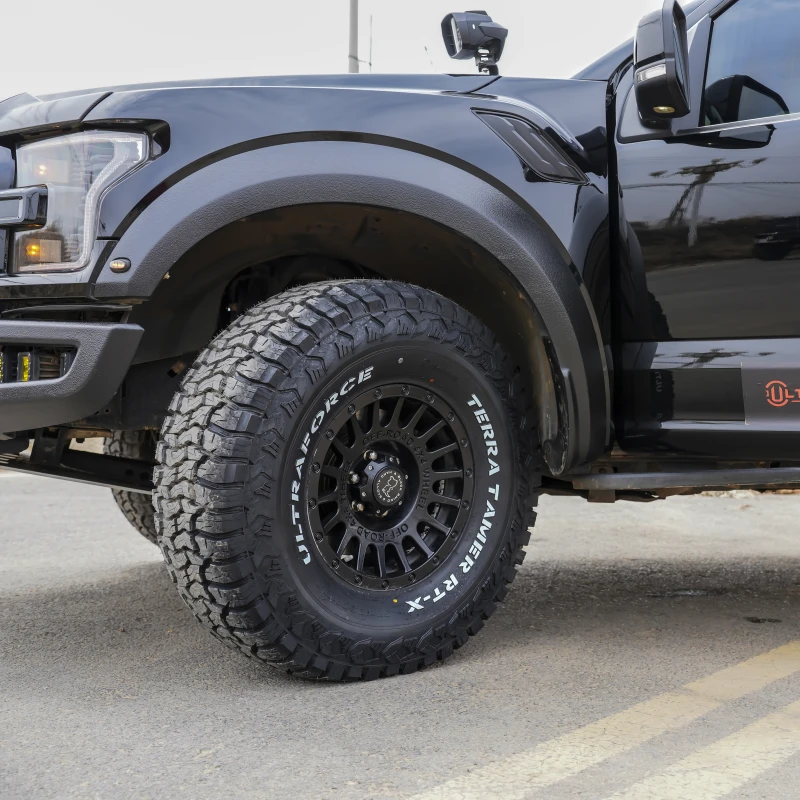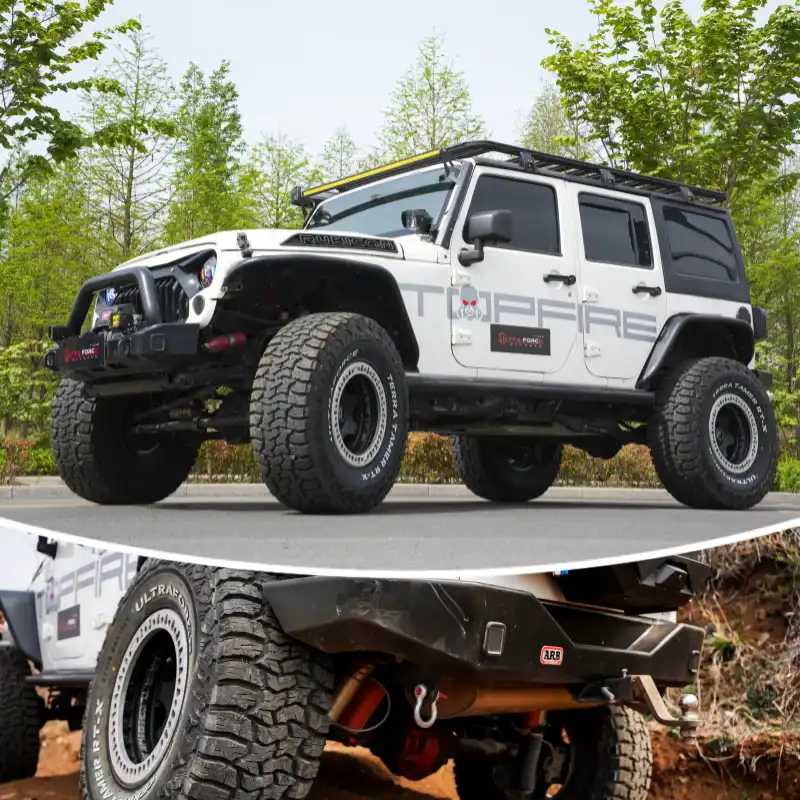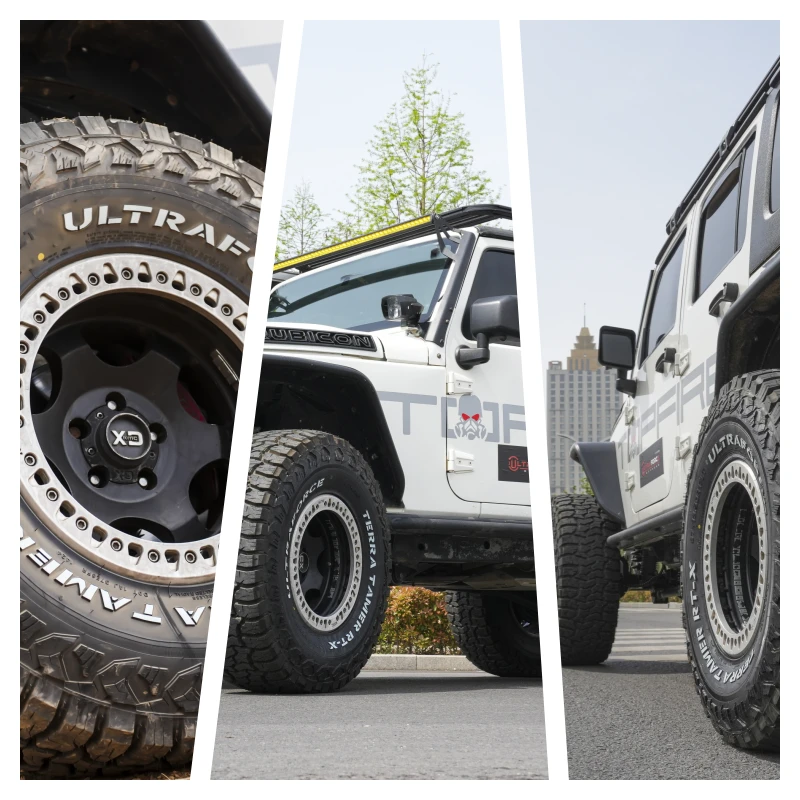How Long Do Off-Road Tires Last? A Comprehensive Guide with Data
Off-road tires are a vital component for enthusiasts and professionals who tackle rugged terrains. Understanding their lifespan is essential for optimizing performance, safety, and cost-effectiveness. This article dives into the factors influencing the longevity of off-road tires, supported by research data and tables for clarity.
Factors Affecting the Lifespan of Off-Road Tires
Off-road tires are built to endure challenging conditions, but their lifespan is significantly influenced by various factors. Understanding these factors will not only help in prolonging the life of your tires but also enhance your overall driving experience and safety. Here’s a detailed look at the key elements that affect the longevity of off-road tires:
Terrain Type
The terrain on which you drive plays a crucial role in how quickly off-road tires wear out. Different surfaces exert varying amounts of stress on the tires.
Rocky Terrain:
Rocky surfaces are extremely abrasive. The sharp edges of rocks cause the rubber to wear down faster, especially if the tire frequently makes contact with jagged rocks or uneven surfaces. In extreme cases, off-road tires can suffer from sidewall cuts or punctures. This is one of the most challenging terrains for tires, reducing their lifespan to about 25,000 to 30,000 miles on average.
Solution: Choosing tires with reinforced sidewalls and tougher compounds designed for rugged use can improve durability.
While mud doesn’t wear down tires as quickly as rocks, it can still lead to premature aging. Mud can get trapped in tire treads, leading to uneven wear and loss of traction. The additional stress from the constant movement through soft, slippery surfaces can also contribute to faster tread degradation.
Average lifespan: Around 30,000 to 40,000 miles for tires in muddy conditions.
Solution: Tires with deeper and more aggressive treads are ideal for muddy terrains as they help prevent clogging and provide better grip.
Driving on sand exerts minimal friction, making it one of the least abrasive terrains for tires. However, sand can still cause a slight amount of wear, especially if the vehicle is frequently driven over dunes or soft sand. Since there’s less resistance, tires often last the longest in sandy environments, with lifespans of 40,000 to 50,000 miles.
Solution: Tires designed for sandy terrains typically feature large, widely spaced treads that offer better flotation and prevent excessive wear.
Mixed Terrain:
In real-world off-roading, it’s common to encounter a combination of rocky, muddy, and sandy surfaces. Tires used in mixed conditions can have a variable lifespan of 35,000 to 45,000 miles, depending on the frequency and type of terrain faced.
Solution: All-terrain tires are engineered to handle a variety of surfaces, making them an excellent choice for mixed terrains.
Driving Habits
The way you drive has a significant impact on the lifespan of your off-road tires. Aggressive driving, such as rapid acceleration, hard braking, and high-speed cornering, increases the wear on your tires. It accelerates tread degradation and could lead to uneven wear patterns. Here’s how different driving habits affect tire life:
Aggressive Driving:
Frequently slamming the accelerator to speed up on trails or racing through challenging terrains causes excessive strain on the tires, leading to higher temperatures, faster wear, and a greater risk of damage.
Effect on lifespan: Tires may wear out up to 20% faster due to aggressive driving.
Smooth driving, such as avoiding sharp turns, gradual acceleration, and maintaining moderate speeds, can extend the life of your tires. Off-road enthusiasts who are mindful of their driving habits can see a significant increase in tire lifespan.
Effect on lifespan: Tires can last significantly longer, with an increase of up to 25% in durability.
Tire Quality and Construction
Not all off-road tires are created equal. The quality of the tire's materials, its tread design, and its construction directly impact its lifespan. Premium tires made from high-quality rubber compounds and reinforced materials tend to outlast budget options.
Premium Tires:
High-end off-road tires use specialized rubber compounds that are engineered to resist wear and tear better than cheaper alternatives. These tires often feature stronger sidewalls, deeper treads, and more advanced tread patterns, offering superior durability and traction on tough terrains.
Average lifespan: Premium tires can last up to 50,000 to 60,000 miles depending on usage and maintenance.
Budget Tires:
Lower-priced tires generally use softer rubber, which offers less resistance to wear and often needs to be replaced more frequently. These tires may be adequate for occasional off-road use but tend to wear out faster under extreme conditions.
Average lifespan: Budget tires typically last around 20,000 to 30,000 miles, particularly under heavy use.
Tire Features to Look for:
Reinforced Sidewalls: Offer added protection against cuts and punctures.
Heavy-Duty Tread Patterns: Provide improved traction and reduce wear on tough surfaces.
Rubber Compounds: Tires with compounds designed for specific conditions (e.g., softer for mud or harder for rock) often last longer in their intended environments.
Maintenance Practices
Proper tire maintenance is essential for extending the life of your off-road tires. Tires that are neglected or poorly maintained will wear out faster and may even fail prematurely. Here’s what you can do to maintain your off-road tires:
Tire Pressure:
Underinflated or overinflated tires wear unevenly and can become damaged more easily. Off-road tires should be inflated to the recommended pressure, as listed by the manufacturer. Running tires underinflated or overinflated can cause sidewall bulging, tread damage, and uneven wear.
Tip: Check tire pressure regularly (every 2 weeks or before every off-road adventure).
Tire Rotation:
Tires wear at different rates depending on their position on the vehicle. Front tires, for example, may wear faster due to steering and braking forces. Rotating the tires regularly helps ensure even wear and maximizes their lifespan.
Tip: Rotate tires every 5,000 to 7,000 miles or according to the manufacturer’s recommendations.
Alignment and Suspension:
Misaligned wheels or suspension issues lead to uneven wear patterns, causing tires to wear out prematurely. Ensure that your vehicle’s alignment is checked and adjusted regularly, particularly after heavy off-roading.
Tip: Have alignment checked annually or if you notice your vehicle pulling to one side.
Tire Balancing:
Off-road tires should be balanced properly to avoid vibrations that could lead to uneven tread wear. Imbalances can result in a rough ride and damage to the tire structure.
Tip: Balance tires whenever new tires are installed or when uneven wear is detected.
Environmental Conditions
Off-road tires are subjected to various environmental conditions that can impact their lifespan. These conditions include temperature fluctuations, exposure to UV rays, and humidity levels. Here’s how they affect tire longevity:
Temperature:
Tires are vulnerable to heat. Excessive heat generated from long off-road sessions, particularly in hot climates, can cause the rubber to break down faster. Conversely, very cold temperatures can make tires brittle and prone to cracking.
Effect on lifespan: Extreme temperatures can reduce the lifespan of your tires by 10-15%.
UV Exposure:
Prolonged exposure to sunlight and UV rays can cause the rubber to harden and crack, leading to premature aging of the tires.
Effect on lifespan: UV exposure accelerates tire degradation by 5-10%.
Humidity and Wet Conditions:
Frequent exposure to wet conditions and mud can weaken the tire material, particularly when tires are left wet for extended periods. Keeping tires clean and dry helps maintain their structure and performance.
Load and Weight Distribution
Carrying excessive weight or having uneven weight distribution can increase the strain on off-road tires, leading to faster wear. Overloading your vehicle, especially on rough terrains, can cause the tires to wear out much quicker than normal.
Effect of Overloading:
Carrying loads beyond the manufacturer’s recommended limit increases the risk of tire deformation, overheating, and faster wear. Off-road tires are built to handle the typical weight of the vehicle and its cargo, but exceeding these limits can drastically shorten their lifespan.
Solution: Ensure that your vehicle’s load is evenly distributed, and never exceed the recommended load capacity.
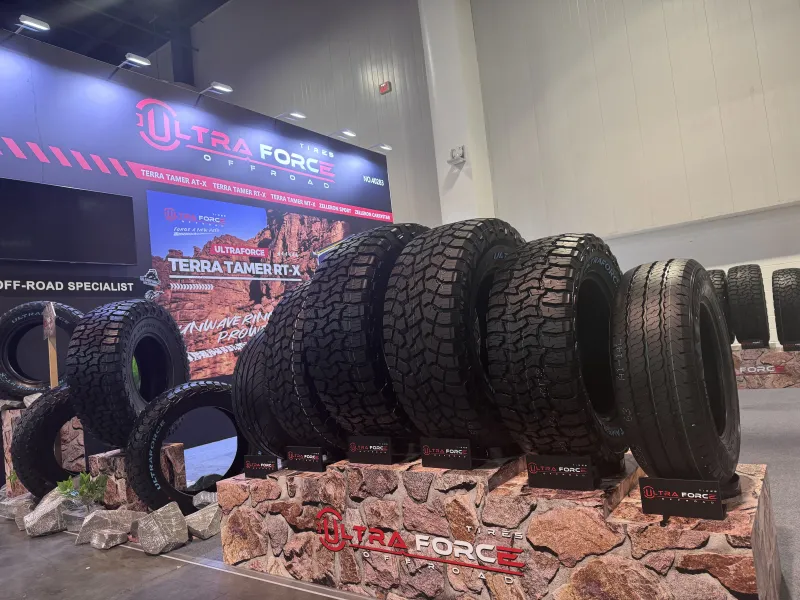
Research Data on Off-Road Tire Lifespan
A study conducted by the Off-Road Tire Association analyzed the average lifespan of various tire brands across different terrains. The table below summarizes the findings.
| Terrain Type | Average Lifespan (Miles) | High-Quality Tires (Miles) | Budget Tires (Miles) |
|---|---|---|---|
| Rocky | 25,000 - 30,000 | 35,000 | 20,000 |
| Muddy | 30,000 - 40,000 | 50,000 | 25,000 |
| Sandy | 40,000 - 50,000 | 60,000 | 35,000 |
| Mixed | 35,000 - 45,000 | 55,000 | 30,000 |
Best Practices to Extend Off-Road Tire Life
Off-road tires are built to endure rough and rugged terrains, but they still require proper care and maintenance to ensure they last as long as possible. With the right practices, you can maximize the lifespan of your off-road tires, improve their performance, and reduce the risk of unexpected tire failures during your off-road adventures. Below are some best practices to help extend the life of your off-road tires.
Regular Tire Pressure Checks
One of the most critical aspects of tire maintenance is ensuring your tires are properly inflated. Incorrect tire pressure can lead to premature wear, compromised traction, and even tire failure. For off-road vehicles, tire pressure is particularly important as it affects the tire’s ability to perform on various terrains.
Underinflation:
Driving with underinflated tires causes them to flex too much, which generates excess heat and increases the wear on the tread. This can also lead to sidewall bulging or blowouts, especially in challenging terrains.
Overinflation:
Overinflated tires can cause the tread to wear unevenly, typically in the center, reducing the tire’s overall contact with the ground. This can affect handling and reduce traction, particularly in off-road conditions.
Optimal Tire Pressure:
Check the recommended tire pressure specified by the manufacturer for both highway and off-road driving. For off-roading, you might need to adjust the pressure lower than usual for better traction and to avoid tire damage. This is especially true for muddy or sandy conditions where lower tire pressure increases the tire’s footprint for better grip.
Tip:
Check tire pressure before every off-road adventure and adjust it based on the type of terrain you’ll be driving on. Use a reliable tire gauge and consider investing in a portable air compressor for convenient adjustments while out on the trail.
Regular Tire Rotation
Tire rotation is essential to ensure even wear and maximize the lifespan of your off-road tires. The front tires typically wear faster than the rear due to the added stress from steering and braking. Rotating your tires at regular intervals ensures that all tires wear evenly, which prolongs their life.
When to Rotate Tires:
For off-road tires, rotate them every 5,000 to 7,000 miles, or at the manufacturer’s recommended intervals. For aggressive off-road use, you might need to rotate them more frequently.
How to Rotate:
The exact pattern of tire rotation depends on whether your vehicle is front-wheel drive, rear-wheel drive, or all-wheel drive. Follow the manufacturer’s recommendations for proper rotation patterns.
Benefits of Tire Rotation:
Even wear improves vehicle handling, reduces the likelihood of uneven wear patterns, and helps ensure the tread depth remains uniform, which is crucial for optimal traction on rough terrains.
Avoid Overloading the Vehicle
Overloading your off-road vehicle puts excessive strain on the tires, leading to premature wear and even tire failure. When a vehicle is overloaded, the tires must support more weight than they are designed to handle, which can lead to excessive heat buildup and increased friction.
Check Load Limits:
Always adhere to the vehicle's manufacturer guidelines for maximum load capacity. Carrying excessive weight not only wears down the tires faster but also affects suspension and overall vehicle performance.
Balanced Load Distribution:
Properly distribute the load across your vehicle, ensuring that the weight is evenly spread. This helps prevent one set of tires from bearing too much weight, which can cause uneven wear and damage over time.
Tip:
If possible, use a trailer for hauling additional gear or equipment. This will reduce the load on your vehicle’s tires and improve their longevity.
Drive Smoothly and Avoid Aggressive Driving
Aggressive driving, such as rapid acceleration, sudden braking, sharp turns, or high-speed off-roading, puts unnecessary stress on your tires, causing them to wear out prematurely. Smooth and controlled driving helps preserve the integrity of the tires and ensures a longer lifespan.
Aggressive Off-Roading:
Constant high-speed driving over rocks, mud, or sand puts a lot of strain on tires, increasing wear. Hard acceleration or braking generates excessive friction, which contributes to rapid tread wear.
Smooth Driving Techniques:
Maintain a steady speed, avoid sudden acceleration or braking, and take turns slowly and deliberately. Gradual inputs are especially important when navigating difficult off-road terrains.
Tip:
Try to maintain a steady pace that allows your tires to grip the terrain naturally. When tackling obstacles, use slow, steady throttle inputs to minimize tire stress.
Proper Tire Alignment and Suspension Maintenance
Misalignment or worn suspension components can cause uneven tire wear. If the alignment is off, your tires may scrub against the road or trail surface, resulting in uneven wear patterns, especially on the edges of the tread. In addition, poor suspension can lead to increased impact forces on the tires when driving over obstacles.
Regular Alignment Checks:
Have the alignment checked and adjusted as necessary. It’s especially important to check alignment after hitting a large obstacle or curb. Misalignment can lead to faster wear and affect the handling of your vehicle.
Suspension Maintenance:
Keep your suspension system in good working order. Worn-out shocks or struts can cause excessive bouncing or bouncing back on rough terrain, putting additional stress on the tires.
Tip:
Have your suspension and alignment checked regularly, particularly after off-road excursions that involve heavy impact or rough driving.
Clean and Inspect Tires After Each Trip
Off-road environments often expose tires to dirt, mud, debris, and other contaminants that can accelerate wear if left unchecked. Cleaning and inspecting your tires after each off-road trip helps identify any damage early and keeps your tires in better condition.
Cleaning Tires:
After every off-road adventure, wash off any mud, dirt, or debris that might be stuck in the tread. Debris can cause uneven wear or, in some cases, punctures if it is not removed. Use a hose to rinse the tires and a soft brush to scrub the sidewalls and tread.
Inspect for Damage:
Check your tires regularly for cuts, punctures, or bulges, especially after driving on rough terrain. Early detection of damage can help you address issues before they compromise the tire's integrity.
Tip:
Carry a tire repair kit when off-roading. If a small puncture or tear occurs, you may be able to repair it on the spot, avoiding further damage to the tire.
Select the Right Tires for the Terrain
Not all off-road tires are designed for the same types of terrain. Using the right tire for the conditions you’ll be driving in will not only improve performance but also extend the lifespan of the tire.
Tire Type Selection:
Choose tires that are suited to the terrain you primarily drive on. For example, mud-terrain tires are designed with deeper, more aggressive treads to handle wet, muddy conditions, while all-terrain tires are better suited for mixed surfaces. Using the correct tire ensures that your tires don’t wear out prematurely due to excessive strain.
Tip:
If you regularly encounter varied terrains, consider investing in all-terrain tires that can handle a variety of surfaces without compromising longevity.
Store Tires Properly When Not in Use
If you’re not going to be using your off-road vehicle for a while, proper tire storage is essential to ensure that they don’t deteriorate due to environmental factors.
Avoid Direct Sunlight:
UV rays from the sun can cause the rubber to break down over time, leading to cracks and a reduced lifespan. Store your vehicle in a shaded or covered area, or cover the tires to protect them from the sun.
Store Tires in a Cool, Dry Place:
Extreme temperatures, whether too hot or too cold, can also affect the rubber’s integrity. Store tires in a climate-controlled area to prevent damage.
Tip:
If you’re storing tires off the vehicle, keep them upright and avoid stacking them to prevent deformation. Keep them away from oil, gasoline, or solvents, as these can degrade the rubber.
Replace Tires as Needed
Even with the best care, tires do wear out over time. If your off-road tires show significant tread wear, sidewall damage, or other signs of deterioration, it’s time to replace them to ensure safety and performance.
When to Replace Tires:
Check the tread depth regularly. For off-road tires, a depth gauge is essential for monitoring the tread. If the tread is worn down to 3/32” or less, it's time to replace your tires.
Signs of Deterioration:
Cracks, bulges, or punctures that cannot be repaired are all signs that a tire needs replacing.
Tip:
If you frequently find yourself needing to replace tires, reconsider your driving habits or the types of tires you are using. Make adjustments to your off-roading routine to help extend tire life.
Signs Your Off-Road Tires Need Replacement
Reduced Tread Depth: Tread depth below 4/32 inches compromises traction.
Visible Cracks: Cracks on the sidewall indicate aging.
Frequent Flats: Persistent punctures or air loss are red flags.
The following table outlines the recommended tread depth for different terrains:
| Terrain | Minimum Tread Depth (Inches) |
|---|---|
| Rocky | 6/32 |
| Muddy | 5/32 |
| Sandy | 4/32 |
Cost Analysis of Off-Road Tires
Off-road tires can range from $150 to $500 each, depending on the brand and quality. Replacing them prematurely due to improper maintenance can significantly increase costs. The table below compares the cost-effectiveness of proper maintenance:
| Maintenance Level | Average Lifespan (Miles) | Cost per Mile |
|---|---|---|
| Poor | 25,000 | $0.02 |
| Moderate | 40,000 | $0.0125 |
| Excellent | 60,000 | $0.0083 |
Environmental Impact of Off-Road Tire Disposal
Improper disposal of tires contributes to environmental degradation. Recycling programs and retreading services are effective ways to reduce waste.
Recycling Statistics
80% of scrapped tires are recycled globally.
Retreading reduces waste by up to 60%.
Expert Recommendations
Industry experts suggest investing in durable off-road tires designed for specific terrains. Tires with advanced tread patterns and reinforced materials, such as UltraForce Tires, offer exceptional durability.
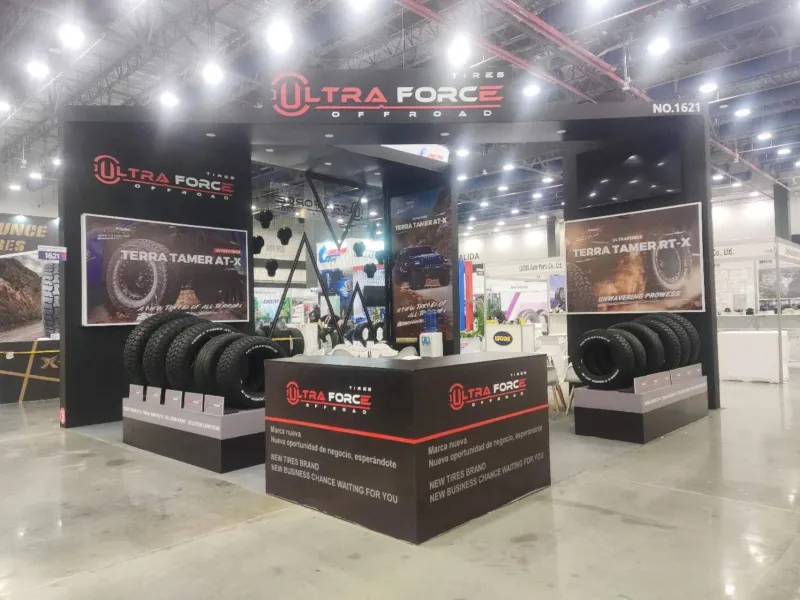
Conclusion
By following these best practices, you can significantly extend the life of your off-road tires while improving your vehicle’s performance and safety. Regular tire pressure checks, tire rotation, avoiding overloading, driving smoothly, and maintaining suspension and alignment are just a few ways to keep your off-road tires in optimal condition. With proper care and attention, your off-road tires can endure many more miles of adventure.
If you're looking for high-quality off-road tires that excel in performance, durability, and superior traction, look no further than UltraForce Tires. As a professional designer and manufacturer of off-road and passenger tires, we bring decades of experience in product development and global export. Our dedication is to provide you with the ultimate driving experience by creating tires that perform well in various road conditions, from sandy deserts to rocky trails and everything in between.
At UltraForce Tires, we understand the needs of off-road enthusiasts and are proud to offer a diverse range of tires designed to meet the demands of different terrains and weather. Whether you're tackling muddy paths, gravel roads, or snow-covered routes, our tires are engineered to ensure top-notch performance and reliability.
In addition to our ready-made off-road tires, we also offer customized services tailored to your specific needs. From tread and sidewall design to size adjustments and performance enhancements, UltraForce Tires is here to support your journey with products that are built to perform in any driving condition.
Let UltraForce Tires be your trusted partner for all your off-road adventures, providing tires that go the distance, so you can enjoy every ride to its fullest. Reach out today to learn more about our product offerings and how we can help you get the best out of your off-road experience!
